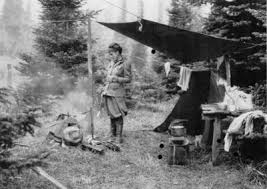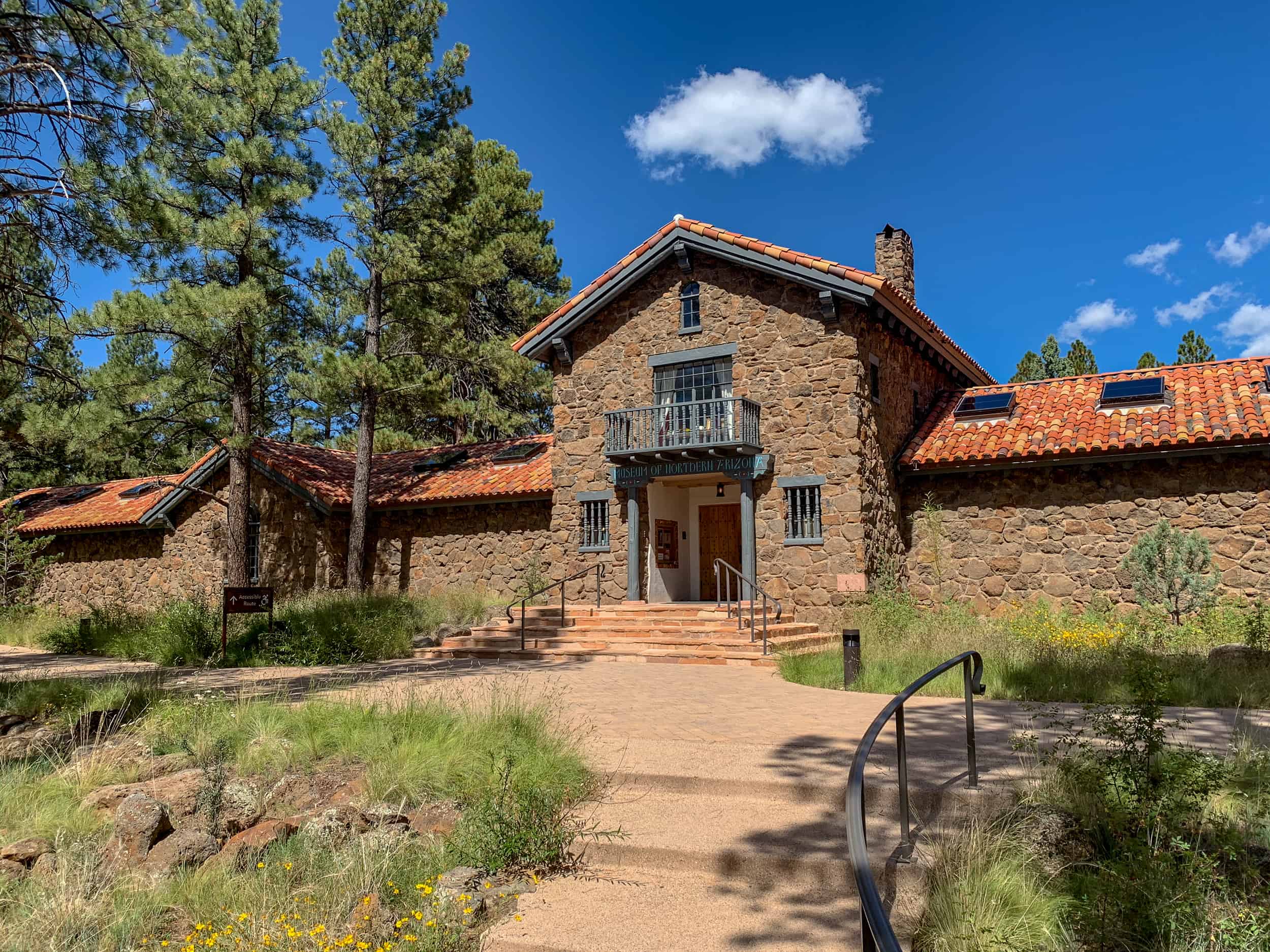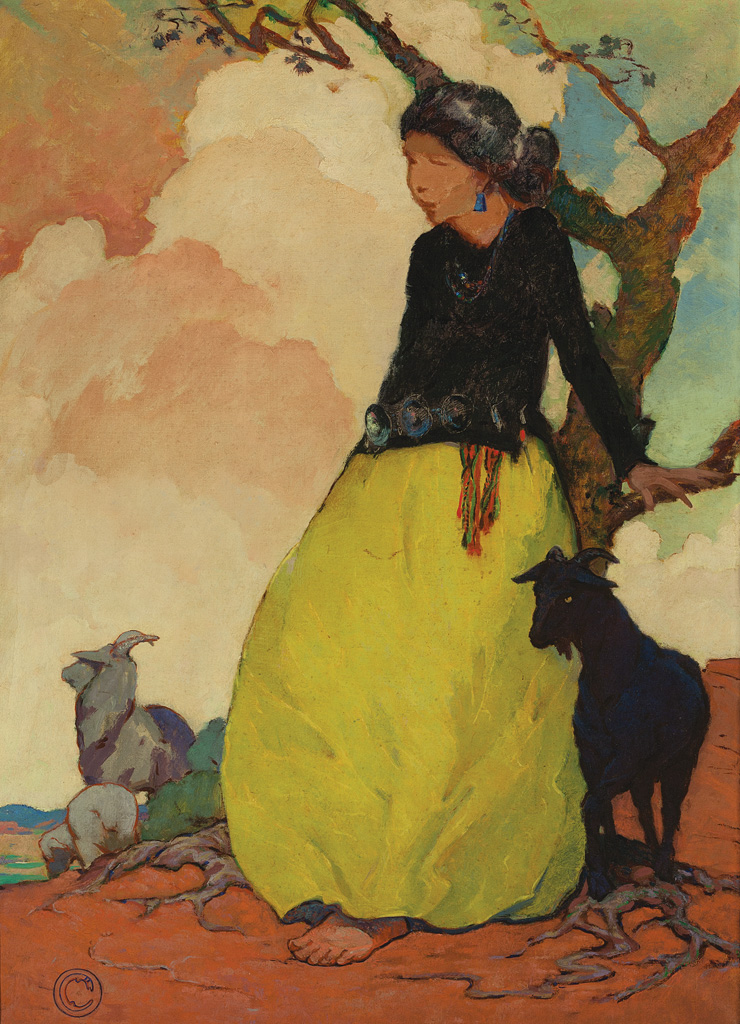In 2012,
Arizona (and New Mexico) celebrated 100 years of statehood with special events
of all kinds. The Museum of Northern Arizona (MNA) had a special exhibit of its
artist founder (along with her husband) Mary-Russell Ferrell Colton. My friend Penny and I were heading from
California to a conference of Women Writing the West when we came upon the
Museum, set beneath the San Francisco Peaks, and were smart enough to stop.
The awesome
lifework of the Coltons was magical. Established in 1928, he was the Director
and she served as the Art Curator for 20 years. Both were educated in Philadelphia where he
was a Professor of Zoology at the University of Pennsylvania; she studied at
the Philadelphia School of Art and Design for Women, graduating in 1909. Both were from
wealthy and prestigious families.
While at school, Mary was
influenced by two tonalist painting instructors: Henry Snell and Elliot
Dangerfield. In an MNA publication, Plateau,Vol.7,
#2, essayist Alan Petersen defines tonalism as: “…simplified forms, harmonious,
muted color, atmospheric space, and often an element of mystery or melancholy.”
With Mary-Russell’s discovery of the West, her work followed in the tonal and
impressionist patterns. However, her palette
was softer than the Impressionists, showing more of the muted colors of the Tonalists.
How she came to the west is a story unto itself.
 Plein Air painting requires effort!
Plein Air painting requires effort!
After graduation, in 1909,
Mary-Russell joined with other artists under the leadership of Dr. Charles Shaw,
a botanist, for a trip to the Selkirk Mountains in British Columbia. It was a
trip that changed her life in exposing her to incredible landscapes. They
traveled by steamer up the Columbia River, continued their travels on horseback
and on foot, camping along the way. She wrote “…the greatest time of my life…Never
hoped to have such fun in my life.” She was a member of “The Philadelphia Ten”
and exhibited with these women artists until1945. Her paintings and sculpture
found their way into museum and private collections over the years.
Navajo Shepherdess c. 1916


Mary-Russell returned to the Selkirks with Dr. Shaw’s group in 1910. A new member was Dr.Harold Sellers Colton, a zoology professor at the University of Pennsylvania.They married May 23,1912 and traveled west for their honeymoon.Their mutual attraction to the Flagstaff area continued with annual summer trips. They had two sons: Ferrell was born in 1914 and lived well into adulthood; Sabin was born in 1917 and died in 1924 in Tucson of valley fever, a fungal infection.of the lungs.
Navajo Shepherdess c. 1916

Mary-Russell returned to the Selkirks with Dr. Shaw’s group in 1910. A new member was Dr.Harold Sellers Colton, a zoology professor at the University of Pennsylvania.They married May 23,1912 and traveled west for their honeymoon.Their mutual attraction to the Flagstaff area continued with annual summer trips. They had two sons: Ferrell was born in 1914 and lived well into adulthood; Sabin was born in 1917 and died in 1924 in Tucson of valley fever, a fungal infection.of the lungs.
M-RFC Portrait by Isabel Branson Cartwright 1927,
classmate at Philadelphia School of Art & Design for Women
Hopi Chief Edmund Nesquatewa, 1942
In 1925, Harold’s father died which led to a considerable inheritance. By the next year, he quit his teaching job and the family moved to Arizona, establishing the MNA on the old Coyote Ranch north of town. Well before the move, the Colton’s developed a special appreciation for the art work of the Hopi and Navajo. They collected all manner of objects, archaeological and contemporary jewelry, pottery, weavings and basketry.

Mary’s devotion to
education led her to write and support efforts to instill her values in school
children, whether Indian or Anglo. This became critical during the Depression
with myriad cutbacks of funds. She lectured, wrote letters and articles,
traveled to D.C. to stress the need for support.
Though the Coltons did
much exploring in the West, especially in the Colorado Plateau, for
archaeological sites and their artifacts, their goals were preservation and
education. Mary fostered a hope for
contemporary Native artists to also explore new methodologies. To that end, she
urged the Hopi jewelers to develop silver overlay which proved successful. Always, she
sought not only for artistic growth but also for economic enhancements for the
artist communities she nurtured. To that end, she started Hopi, Navajo and Children’s Craft
Shows.
Mary-Russell Ferrell Colton
was inducted into the Arizona Women’s Hall of Fame in 1981 following her death on July
26, 1971. She had previously been awarded recognition from the Bureau of Indian Affairs
for her efforts to bring Native Arts to the attention of the public. The Coltons added to the cultural endeavors in the Flagstaff community which enhanced the whole state.
References:
1. Plateau, 2012, Volume 7, Number 2; A publication of the Museum of Northern Arizon; includes essays by Alan Petersen, James Burns and Betsy Fahlman. Excellent resource, catalog of Colton's paintings.

2. Photos: Google Free Images
Arletta Dawdy writes Historical Fiction set in Cochise County, Arizona and in Northern CA.
Her Huachuca Trilogy can be found on Amazon, paperback and Kindle as stand-alones:
HUACHUCA WOMAN, BY GRACE and ROSE OF SHARON
References:
1. Plateau, 2012, Volume 7, Number 2; A publication of the Museum of Northern Arizon; includes essays by Alan Petersen, James Burns and Betsy Fahlman. Excellent resource, catalog of Colton's paintings.
2. Photos: Google Free Images
Arletta Dawdy writes Historical Fiction set in Cochise County, Arizona and in Northern CA.
Her Huachuca Trilogy can be found on Amazon, paperback and Kindle as stand-alones:
HUACHUCA WOMAN, BY GRACE and ROSE OF SHARON



The Coltons, especially Mary, sound like amazing people. I admire her for supporting the growth of Hopi and Navajo artists. Having visited the Navajo homeland and viewed some of their beautiful pottery and jewelry, I am a great admirer of their work.
ReplyDeleteHi, Lyn. I have to agree with you!
ReplyDelete